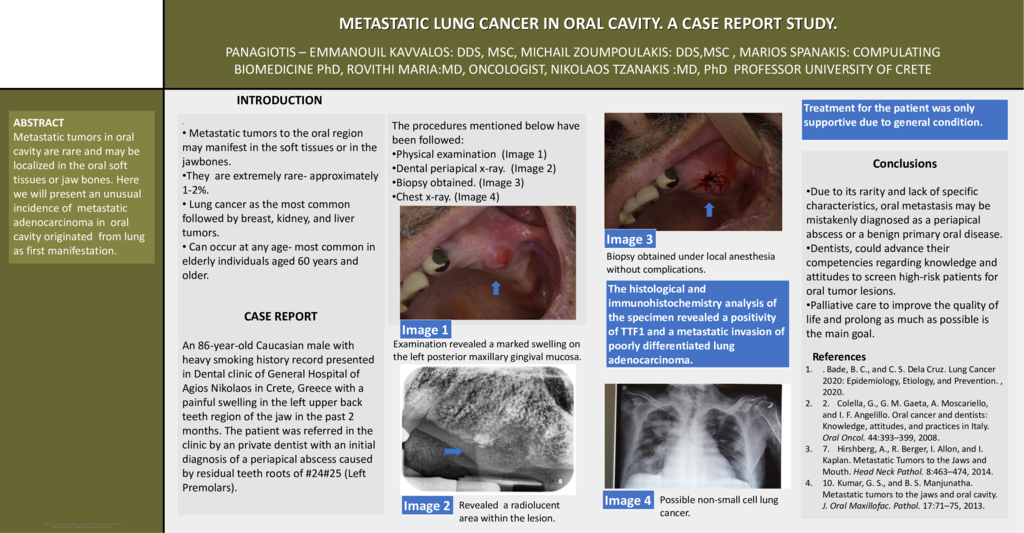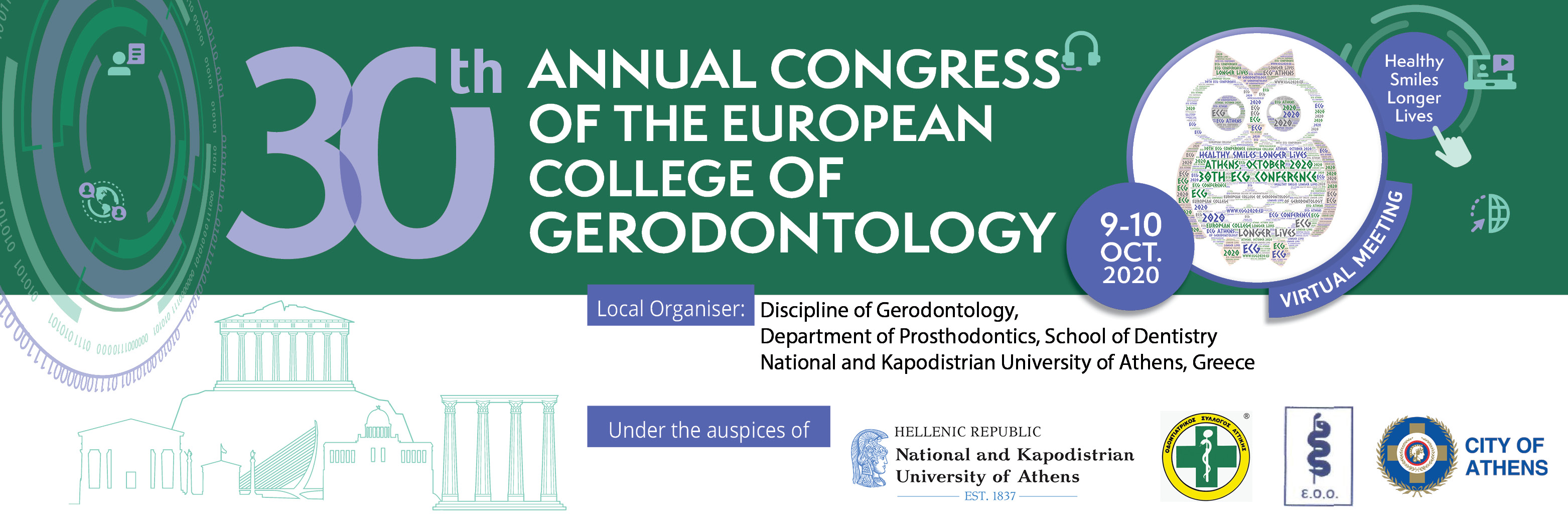Lung cancer is one of the leading causes of cancer mortality worldwide. Survival based strongly on the staging and biology of tumor. Smoking is the main risk factor. Jaw bone and oral cavity metastasis is seldom site of primary lung cancer progression. We herein report an unusual occurrence of non-small cell lung cancer metastasis to the oral cavity and jaw bone. The oral cavity lesion was the first manifestation of the disease. An 86-year-old man with heavy smoking history presented in Dental clinic of General Hospital of Agios Nikolaos with a painful swelling in the left upper back teeth region of the jaw since 2 months. The patient was referred by his dentist with the diagnosis of a periapical abscess caused by residual teeth roots of #24#25. Physical examination revealed a marked swelling on the left upper buccal gingival. Dental periapical x-ray revealed no residual roots but findings of radiolucent area within the lesion. A biopsy obtained under local anesthesia without complications and was sent histology examination. The specimen was consistent with lung adenocarcinoma. Treatment for the patient was only supportive as his general condition was burdened and his physical performance very poor. The most of the published literature describes the lung cancer as the most common malignancy metastasizing to the oral cavity, followed by breast, kidney and liver cancers. Metastasis to the oral cavity, although can occur at any age, is most common in elderly individuals of fifth and sixth decade. Only in a few cases the oral/jaw bones lesions is the first clinical manifestation of primary tumor spread. Our patient was elderly and the oral metastasis was the first manifestation of the disease. Metastatic tumors to the oral region are infrequent and they may be localized in the oral soft tissues or jaw bones. Mostly they originate from the lung. Here we presented a very unusual incidence of a metastatic adenocarcinoma of lung in the oral cavity as first manifestation. Dentist must aware and suspect such a diagnosis as it mimics odontogenic infections or other benign conditions especially in elderly heavy smoking individulas.
- 59 views



